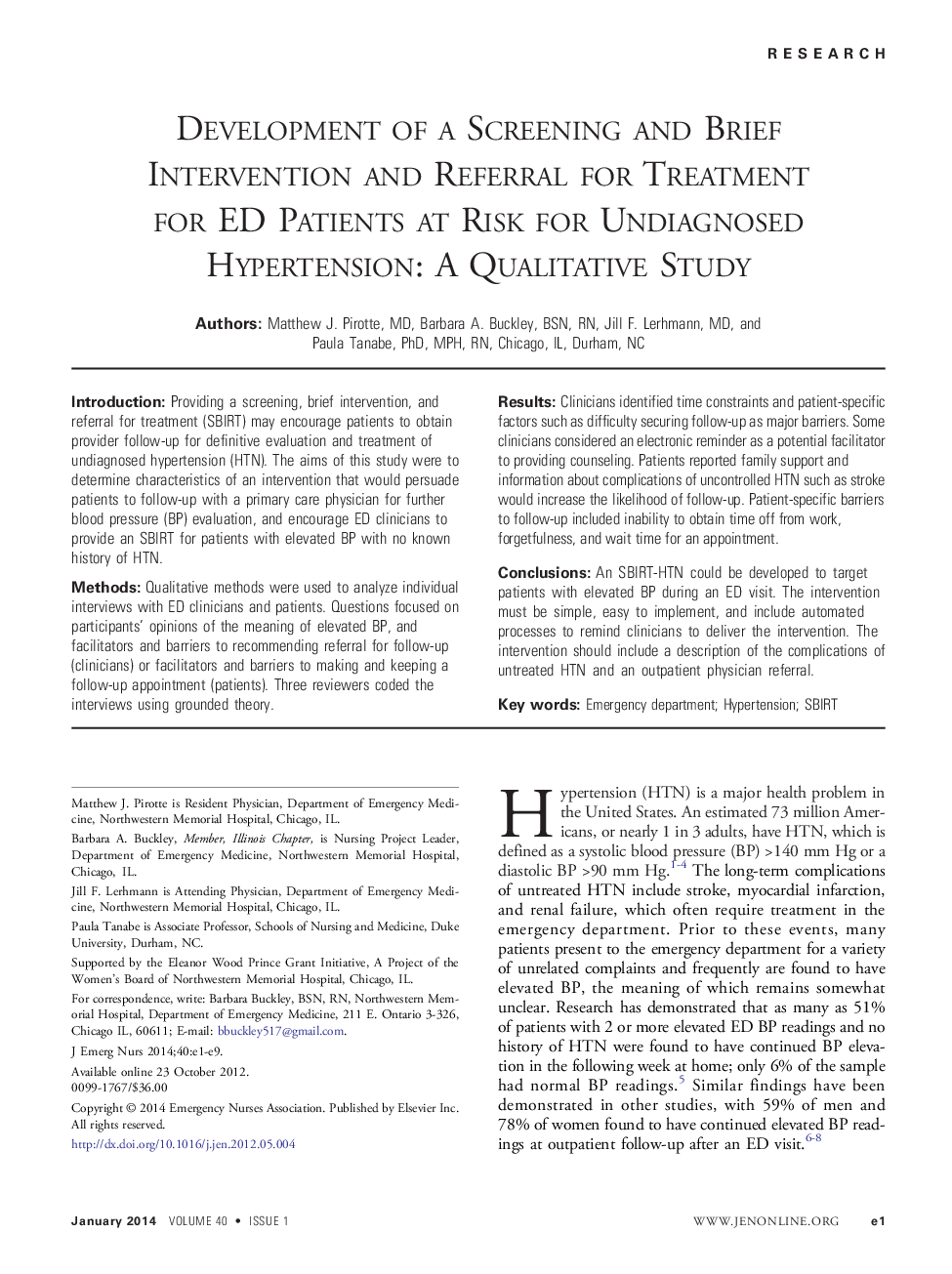| Article ID | Journal | Published Year | Pages | File Type |
|---|---|---|---|---|
| 2610104 | Journal of Emergency Nursing | 2014 | 9 Pages |
IntroductionProviding a screening, brief intervention, and referral for treatment (SBIRT) may encourage patients to obtain provider follow-up for definitive evaluation and treatment of undiagnosed hypertension (HTN). The aims of this study were to determine characteristics of an intervention that would persuade patients to follow-up with a primary care physician for further blood pressure (BP) evaluation, and encourage ED clinicians to provide an SBIRT for patients with elevated BP with no known history of HTN.MethodsQualitative methods were used to analyze individual interviews with ED clinicians and patients. Questions focused on participants' opinions of the meaning of elevated BP, and facilitators and barriers to recommending referral for follow-up (clinicians) or facilitators and barriers to making and keeping a follow-up appointment (patients). Three reviewers coded the interviews using grounded theory.ResultsClinicians identified time constraints and patient-specific factors such as difficulty securing follow-up as major barriers. Some clinicians considered an electronic reminder as a potential facilitator to providing counseling. Patients reported family support and information about complications of uncontrolled HTN such as stroke would increase the likelihood of follow-up. Patient-specific barriers to follow-up included inability to obtain time off from work, forgetfulness, and wait time for an appointment.ConclusionsAn SBIRT-HTN could be developed to target patients with elevated BP during an ED visit. The intervention must be simple, easy to implement, and include automated processes to remind clinicians to deliver the intervention. The intervention should include a description of the complications of untreated HTN and an outpatient physician referral.
